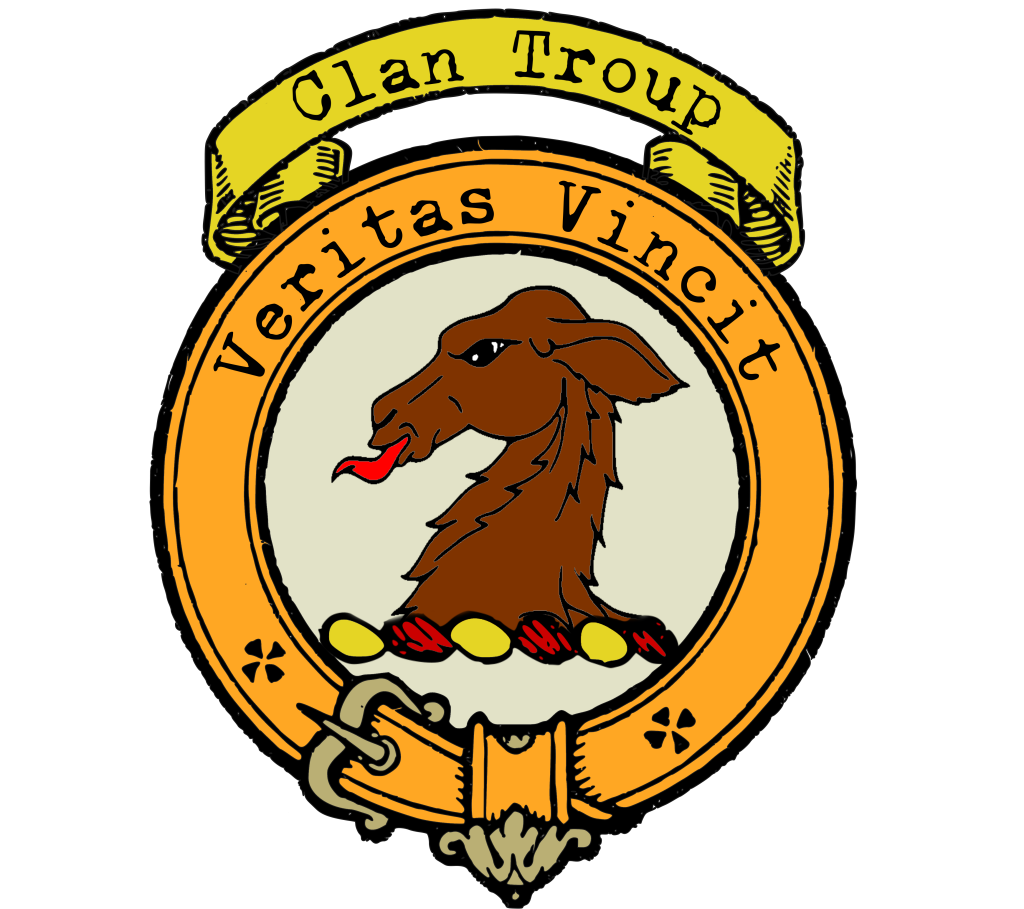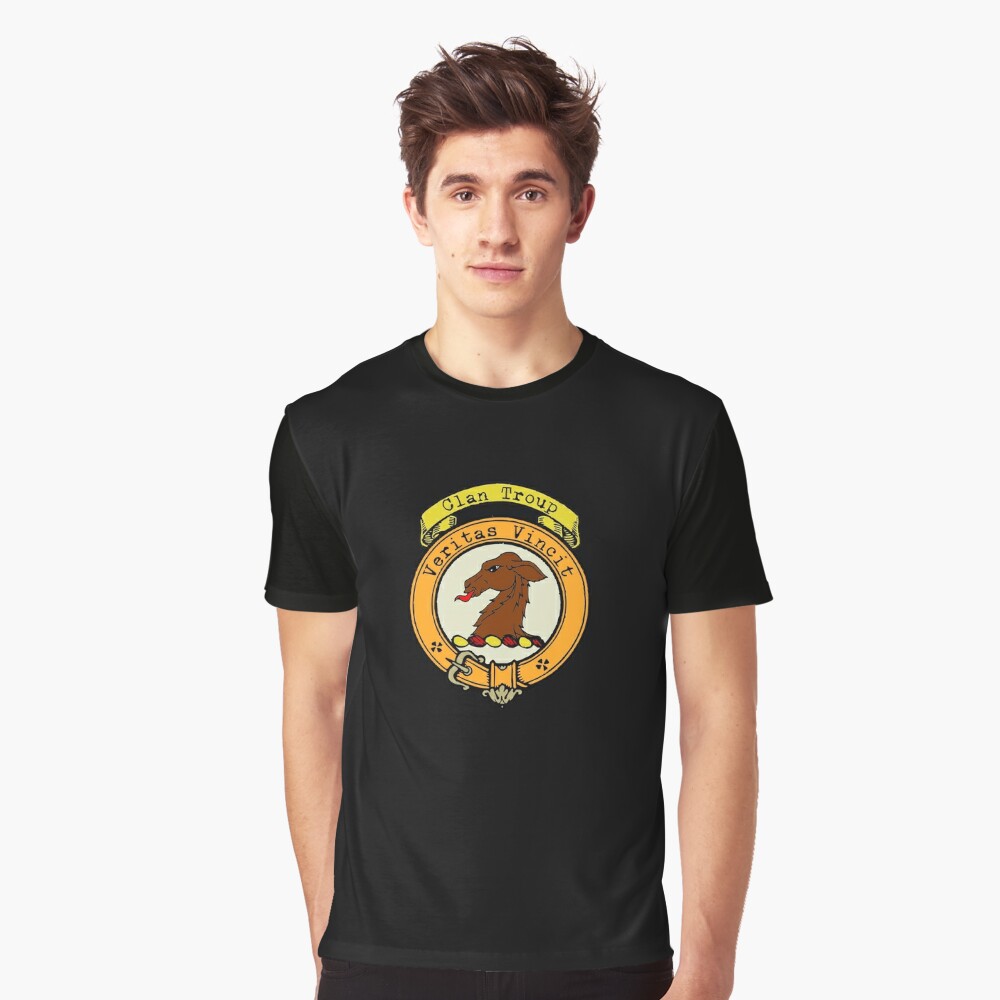Clan Troup Crest
|
|
CREST: A hind’s head erased Proper MOTTO: Veritas vincit TRANSLATION: Truth conquers VARIATIONS: N/A |
| The story of Clan Troup begins in Banffshire, a region in northeastern Scotland. This picturesque area, known for its rugged coastlines and stunning landscapes, played a significant role in shaping the clan’s history. While Banffshire served as the heartland for the Troup clan, historical records also mention Troup lands in Ayrshire, showcasing the clan’s reach across different parts of Scotland.
The earliest documented reference to the Troup clan dates back to the late 13th century when Hamund de Troup of Lanarkshire pledged homage to Edward I of England in 1296. This historical moment is preserved in the Ragman Roll, an important record of medieval Scottish nobility. Hamund de Troup’s seal, featuring a hawk with a crescent and a star, offers a glimpse into the clan’s early symbolism. The Troup clan was not solely involved in martial affairs; they also had ties to the Church. Hamelin de Troupe, for instance, served as a prebendary of Aberdeen Cathedral in 1332. This ecclesiastical connection highlights the clan’s diverse pursuits and contributions to both religious and secular life in Scotland. One intriguing aspect of Clan Troup’s history is the potential wordplay in their heraldry. The Troup arms, as recorded in the Lyon Register, may have employed the technique of canting, using the term ‘trippant’ to create a pun on the clan name. This playfulness in heraldry is a testament to the clan’s creativity and wit. The Troup family appears to have been most prominent in Banffshire and the vicinity of Aberdeen. Over the years, they contributed to their communities through various endeavors, including granting charters of land, becoming burgesses, and holding significant positions in the Church. However, as with many noble families, their prominence eventually waned. Nisbet, a Scottish heraldist and genealogist, notes that the line of Troup of that Ilk came to an end when an heiress married a younger son of the influential Keith family. This marked a turning point in the clan’s history. In the 17th century, the lands of Troup changed hands as they were sold to Major Alexander Garden, a Scottish soldier in the service of the Swedish Crown. The Gardens became the Lairds of Troup and continued to be associated with these lands into the 20th century. One notable branch of the Troup clan, the Troups of Dunbeannan, maintained the undifferenced arms of the family and traced their descent from John Troup of Huntly in the mid-18th century. Among their descendants, Francis Troup of Dunbennan stood out as a distinguished architect and engineer, leaving a mark on the world of art and construction. |
|
Citations:
|
|
Purchase @ Redbubble
Purchase @ Amazon.com
Purchase @ Amazon.co.uk

